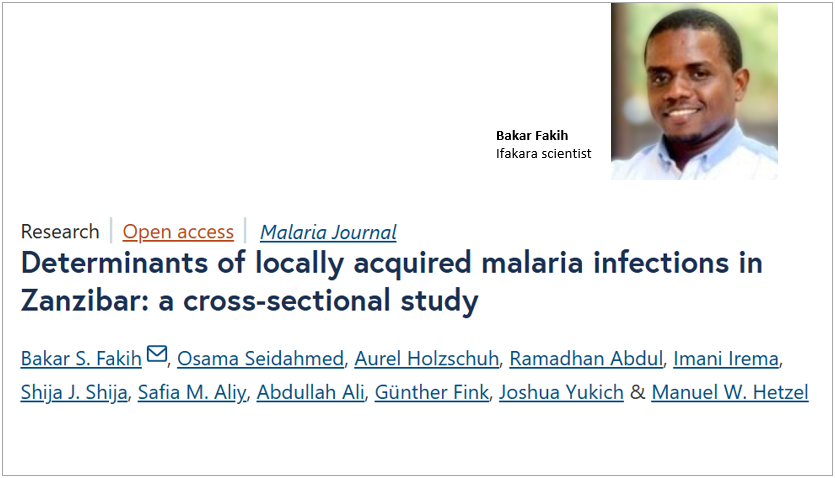
MALARIA: Local infections persist despite major gains in Zanzibar

For the past decades, Zanzibar has made major progress malaria control. Through use of bed nets, indoor spraying, and strong surveillance systems, the islands have driven malaria prevalence down to around 1% — one of the lowest rates in Africa.
Yet, a new study led by the Ifakara Health Institute (IHI), in collaboration with the Swiss Tropical and Public Health Institute (Swiss TPH), Tulane University, and the Zanzibar Malaria Elimination Programme (ZAMEP), reveals a concerning twist in this success story: malaria infections are still being transmitted locally.
Published last week in the Malaria Journal, the research provides insights on why malaria continues to persist in Zanzibar despite years of progress — and what must change for the islands to finally eliminate the disease.
The hidden threat within
The study, led by Ifakara’s Bakar Fakih, examined people living in the households of confirmed malaria cases and their neighbors across five districts of Zanzibar between 2017 and 2018. More than 17,800 individuals were surveyed — most of whom had not travelled outside Zanzibar in the two months before testing. This suggests that the infections they carried were acquired locally.
“Zanzibar’s ‘last-mile’ challenge is real,” says Fakih. “We show that locally acquired infections persist — especially in homes with open windows and in wetter micro-environments. To accelerate elimination, we need to target school-age youth, improve housing design, and push for universal net use.”
Who is most at risk?
The study found that malaria is no longer a disease primarily affecting young children. Instead, older children and young adults now carry the greatest burden. Children aged 5 to 15 years were three and a half times more likely to be infected than adults over 25 while those aged 16 to 25 also faced higher odds of infection.
“As malaria declines, the profile of risk is changing,” note the authors. “School-age children and youth are emerging as the hidden reservoirs of infection.”
The research also confirmed the continued importance of prevention tools. Owning and using mosquito nets was found to reduce the risk by half, while living in houses with unscreened or open windows doubled the risk. Interestingly, people who went to bed later in the evening were less likely to be infected — possibly because many mosquito bites occur early in the evening, before people go under their nets.
How local climate, geography influence malaria risk
Beyond human behavior and housing, local geography and climate play a major role. The study found that people living in wet areas or locations with higher soil moisture — conditions ideal for mosquito breeding — were three times more likely to test positive for malaria than those in drier zones.
These findings emphasize the need for targeted malaria control, focusing on high-risk villages or even individual households where mosquitoes and parasites continue to thrive.
A call for smarter strategies
To close the “last mile” gap, Fakih and colleagues recommend a more integrated approach — one that addresses biological, social, and environmental factors simultaneously. They recommend:
- Expand testing using more sensitive molecular tools to detect hidden infections.
- Promoting housing improvements such as screened windows to reduce mosquito entry.
- Sustain bed net use among school-age children and young adults.
- Use climate and environmental data to guide targeted interventions.
“The path to zero malaria is not just medical — it’s social, environmental, and behavioral,” the authors emphasize. “An integrated and multisectoral approach to vector control is needed to interrupt transmission and accelerate elimination in Zanzibar.”
Zanzibar’s next chapter
Zanzibar’s progress demonstrates that malaria elimination is within reach. But as this study shows, success depends on constant adaptation and precision.
With ZAMEP and partners such as IHI continuing to strengthen surveillance and response systems, every local infection can be traced and contained — ensuring no infection, however small, goes unnoticed.
The study’s message is clear: Zanzibar’s ‘last mile’ may be the toughest yet, but with targeted, locally informed strategies, the islands are poised to make history as one of Africa’s first malaria-free regions.
Read more, here.
